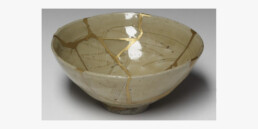A guest blog by Aini Butt.
We live in a world where achievement is applauded not the progress itself; beauty standards are set by the finished product and any imperfections are filtered out. So those who are seen as ‘broken’ or ‘wounded’ are told to ‘take your time to heal so you can move on’ or ‘heal and find your old self again.’ Even with the best of intentions when saying something to encourage or motivate others, are our words empowering or reinforcing society’s romanticised vision of healing?
Healing from painful, life-changing experiences is far from romantic and often there is no way back to the ‘old self’, and this is where I question this need to ‘heal and move on.’ It focuses on the past to form a different future; how is this possible when you fail to acknowledge the present?
During a long conversation with a dear friend, we looked back at our similar journeys and revisited our younger innocent selves. As the saying goes, ‘Ignorance is bliss,’ and it sure was until the blessing turned into a curse and became a tool of torture used by those who were supposed to reciprocate the trust and love they were entrusted with. Is this the former self we are told to return to? Is that what ‘finding yourself’ means: to laboriously dig through the rubble of your past to find yourself broken into smithereens under the weight of your dreams and desires, and ‘take time out to heal’ in order to become whole again?
The Japanese art of Kintsugi (golden seams) teaches us the valuable lesson that there is no return to the ‘unbroken’ past; therefore, there is no attempt to hide the breakage either. Instead, lacquer and gold pigment are used to elevate the broken piece. Often, this art is drawn upon to reiterate how our imperfections make us unique and more beautiful. What if this isn’t about the finished piece and the beauty of its shining gold? What if the golden seams are telling the untold story of the creator’s expertise, which reached new heights of craftsmanship with each mended piece? Again, those who will see the finished piece, will congratulate the artist on their creation’s beauty, but the struggles of finding the appropriate tools and resources needed to mend the broken pieces often remains untold.
Similarly, stories of those who are on a journey of self-healing often remain untold. We are so focused on the destination, which we often refer to as ‘finding ourself’, that we fail to recognise that the ‘self’ is not the end outcome in the distant future. It is the work in progress in the here and now- the present. Those who are on a journey of self-healing through self-discovery will know that it requires honesty and courage to recognise that there is no return to the past. They take this as a motivation to continue reflecting however hard this may be without blaming the past for their present.
If I were to go back in time and meet my younger self, I would tell her that her decision to leave the safety of the shore to sail into the unknown was life-changing, and if it weren’t for her determination and resilience, I wouldn’t be where I am today. We are so quick to judge our past decisions and actions by discarding them as our ‘coping mechanisms’. Upon reflection, there have been many habits I adopted to help me with the aftermath of being in an abusive marriage: toxic productivity; extensive workouts and controlling food intake; periods of extreme highs and lows, and maybe some more I still have to uncover. Although these coping mechanisms were unhealthy, I cannot ignore the fact that they got me to where I am today. Instead of blaming myself and living in regret for adopting these habits, I have learnt to accept their use in the past as a way of self-defence.
Acceptance comes from self-love, which wouldn’t have been possible without the promise of loving myself like I would love those who are dear to me. However, this same self-love demands reflection and the recognition for a more compassionate approach as resorting to old habits, thoughts and beliefs will only drag me back to the past. This is the part of healing we find too shameful to share when those around you can’t see your internal storms. The struggles of constantly rephrasing the critical inner voice because silencing its message is not an option anymore. On days when it whispers the worst-case scenarios, you learn to look for the roots of this fear and slowly become more compassionate towards yourself.
Often the hardest mountain to climb is the one when you journey within, where you find fragments of your former self buried under the weight of guilt and shame. Are you able to let your tears flow without shaming yourself or have you restrained yourself behind these bars of strength? If you desire to break free from this self-imposed cage, you will have to sit with the guilt you have harboured and only through the flood of tears will you rephrase the message of your inner voice.
These times of inner turmoil will be the moments where your expertise is further enhanced and your craftsmanship will allow you to mend your pieces with golden seams.


